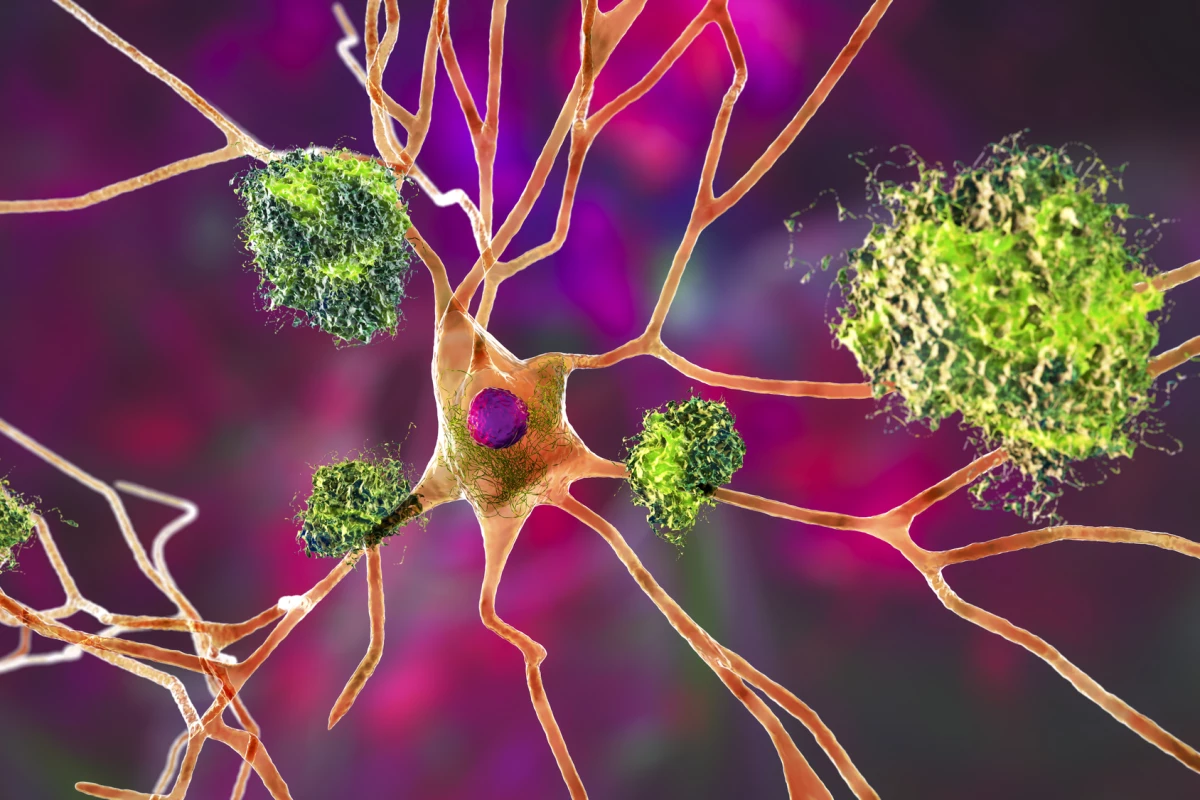There are a lot of unknowns when it comes to the way Alzheimer's takes hold in the brain, but one area where researchers are focusing much of their attention is the development of toxic clumps of proteins in the brain. These harmful clusters are seen as key players in the cognitive decline associated with the disease, and scientists have now found that a single injection of a novel gene therapy may be able to prevent a significant portion of them from forming.
The abnormal accumulation of tau and amyloid proteins are seen as key pathological signs of Alzheimer's disease, and have therefore provided a target for scientists working to both detect the disease more effectively and come up with new ways to treat it. Recent breakthroughs have demonstrated how earlier diagnosis could be achieved through brain imaging technologies or blood tests, and we've also seen how next-gen compounds and implants could prevent these harmful clumps from developing in the first place.
This new research, carried out by scientists at the Massachusetts General Hospital, explores how these biomarkers might be targeted via gene therapy. Last year we looked at an interesting example of this, where researchers were able to introduce genetic material to activate an enzyme that improved memory in mice with advanced Alzheimer's.
The new study takes a different route, taking aim at tau proteins that can misfold and clump together to form harmful neurofibrillary tangles. The gene therapy uses proteins known as zinc finger protein transcription factors, which can be used to alter the expression of certain genes, in this case working to silence the gene expression that codes for tau. Mice with Alzheimer's were given a single injection of this "zinc finger" gene therapy, either directly into the hippocampus of the brain or into a blood vessel intravenously.
This one-off treatment brought about huge reductions in tau proteins, reducing their levels in the brain by between 50 to 80 percent, even as long as 11 months after that single dose. In addition to this substantial lowering of tau levels, the researchers found the therapy also repaired some of the neuronal damage around amyloid plaques in the brains of the diseased rodents.
“The technology worked just the way we had hoped – reducing tau substantially for as long as we looked, causing no side effects that we could see even over many, many months, and improving the pathological changes in the brains of the animals,” says senior author Bradley Hyman. “This suggests a plan forward to try to help patients.”
While the research was carried out on rodents and its effectiveness on human Alzheimer's patients remains unknown, these early results are certainly promising. Working in favor of the technique is its simplicity, conferring such long-lasting and persistent improvements even after only a single injection.
“This was the result of a single treatment of gene regulation therapy, which could be given by an injection into the bloodstream,” says Hyman. “While this therapy is far from patients – as much more development and safety testing would need to be done – it is a promising and exciting first step.”
The research was published in the journal Science Advances.
Source: Massachusetts General Hospital




